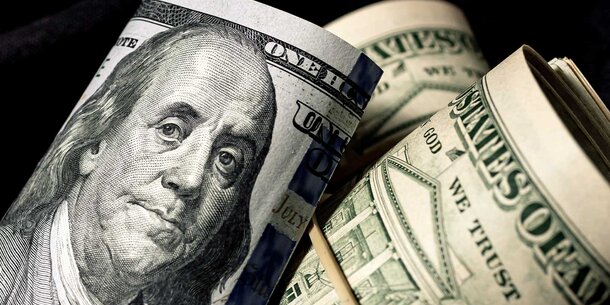The wealthiest few continue to shatter election spending records across the country, but states and cities are pushing back. Public financing of campaigns is the most powerful reform available to counter the outsized influence of megadonors in politics, and it continues to gain momentum. The goal is to give everyday voters a greater say in who gets the power to represent them.
In New York, Gov. Kathy Hochul’s reelection was a victory for the state’s groundbreaking small donor public financing program, which launched last month. She and state legislative leaders invested in the program’s success by providing crucial start-up funding in last year’s state budget. Now that the program is live, continued funding will be essential to fulfilling its promise and providing a blueprint for reform nationwide.
The need for this reform is more urgent than ever. Spending in the 2022 state and federal midterm elections smashed previous records, with current estimates putting the price tag at around $16.7 billion. In 2010, when the Supreme Court’s Citizens United decision unleashed unlimited election spending, small donors were outspending big donors. But this federal cycle, just 100 big donors outspent all 3.7 million estimated small donors combined. Despite comprising just 0.0002 percent of the population, billionaires accounted for about 15 percent of federal election spending, quintupling their contributions since 2010.
New York was no different, experiencing remarkable megadonor spending this cycle. Just one billionaire funneled at least $11 million to two super PACs spending in the governor’s race. In the state senate primary, super PACs also poured more than $1.6 million into five competitive races.
With the launch of its new public financing program, New York is showing the rest of the country how to change this dynamic. Candidates for statewide and legislative offices can now opt into the voluntary program. It builds on tried-and-true aspects of programs like New York City’s while incorporating innovations designed to counter post–Citizens United big spending and amplify in-district support for legislative candidates.
Public financing is a time-tested policy that exists in several forms. In small donor match systems like New York State’s, residents will see their low-dollar contributions to qualified candidates multiplied by public funds. For example, with a matching ratio of six to one, a $10 contribution would get a $60 public match, making the original donation worth $70 to the candidate. Other models give qualifying candidates block grants or provide residents with vouchers to donate to participating candidates.
Public financing also won the support of voters in other parts of the country. In Oakland, California, 73 percent of voters backed a measure to create a voucher program. And in Portland, Maine, 65 percent of voters supported establishing a fund to provide public financing to municipal candidates starting next year.
These cities join at least 15 states and 21 municipalities across the country with public financing programs. Howard County, Maryland, joined its neighbors Washington, DC, and Montgomery County, Maryland, when it completed the first cycle of its small donor matching program this year. Denver’s matching funds program, currently in its first run, is already opening the door to a large and diverse slate of candidates. And still more programs will soon launch in places like Baltimore County and Prince George’s County in Maryland.
Below we outline some of the ways public financing has helped empower everyday Americans in recent elections.
Breaking barriers to political participation
Public financing boosts the community-based support of candidates, regardless of their background — something especially meaningful for individuals who historically have faced barriers in private wealth–based politics, such as women, people of color, members of the LGBTQ+ community, and low-income Americans. New York Attorney General Letitia James, who ran under New York City’s program before taking state office, said the reform “is a critical tool to ensure that more people from diverse backgrounds have the opportunity to hold elected office and serve our communities.”
New York City’s public financing program has been an important part of helping the city’s government reflect the diversity of its residents. In 2021, the program helped elect the city’s most demographically representative council. Women more than doubled their representation to 61 percent, and people of color increased their representation from 51 percent to 67 percent. Ninety-seven percent of these winners received public financing. Candidates of color and female candidates raised as much, on average, as their white and male counterparts.
Maryland’s Montgomery County saw similar benefits this year when its public financing program helped elect an unprecedentedly diverse county council. The council will be majority-female for the first time in four decades and the most racially diverse it has ever been. The new council will include six female members, up from the current total of one. Program participant Kristin Mink will make history as the county’s first Asian American council member. The county executive and two-thirds of council members, including five of the six female council members, participated in the matching program.
Countering the impact of big spending
Public financing programs help candidates run for office and win, and give small donors more clout, even with huge spending by corporations and special interest groups. In Seattle, two-thirds of the publicly financed municipal candidates who faced massive opposition spending by Amazon and other corporations won. In the first cycle of Washington, DC’s Fair Elections Program in 2020, participating candidates tended to outraise and outspend their privately financed counterparts. They also experienced greater electoral success despite not accepting large contributions from wealthy donors, corporations, or PACs.
The design of New York State’s new matching program will help candidates address the realities of campaigning following Citizens United. The program allows participating candidates to continue to raise unmatched private contributions after reaching the public financing maximum. The public financing law also reduces contribution limits for all candidates. These policy choices reinforce the legislature’s stated intent of ensuring “a government that is accountable to all of the voters of the state regardless of wealth or position.”
Increasing participation and diversity of local small donors
Public financing programs help bring in new and more diverse donors, increasing participation from historically underrepresented communities. A study of Seattle’s voucher program found that the 2021 donor participation rate rose most significantly among Black, Latino, and young voters. Relatedly, in the first cycle of Portland, Oregon’s matching program in 2020, fundraising was much more evenly spread across the city, with more contributions from lower-income neighborhoods. After Berkeley, California’s public financing program went into effect in 2018, contributions from non-Berkeley residents dropped to 10 percent of total fundraising that year, down from 33 percent in 2016.
A Brennan Center report comparing fundraising in comparable districts for the New York City Council and New York State Assembly found that New York City’s matching program fosters greater ties between candidates and their constituents. Publicly financed candidates in 2017 raised 30 percent more of their support from in-district donors than did state candidates running in the same neighborhoods in 2018.
New York State’s matching program builds on the promise of New York City’s, with additional innovations specifically designed to promote local district engagement in a statewide context. The program’s tiered match for legislative candidates provides the most meaningful match to the smallest contributions from district residents. The program also only matches in-district contributions for legislative candidates, giving constituents greater significance in funding campaigns and encouraging candidates to spend more time engaging with them.
• • •
Even as election spending continues to skyrocket, public financing programs provide a much-needed antidote. With New York’s leadership, and amid growing demand across the country for alternatives to the status quo, voters should hope and expect to see this reform continue to spread nationwide.




